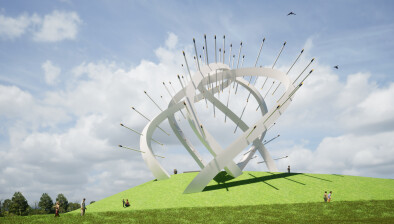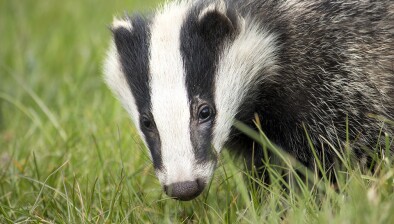And finally… Seddons plant equipment being used for 763mph world land speed record attempt
Equipment supplied by Seddons Plant & Engineers Ltd will be used to help try and smash the world land speed record next year, it has been confirmed.
Seddons is providing a total of five Honda Generators for use by the BLOODHOUND project team during its attempt next October, 20 years after the existing world record of 763mph was set.
The project centres on BLOODHOUND SSC, a supersonic car that is designed not only to go faster than the speed of sound (supersonic) but to over 1,000mph. Weighing 7.5 tonnes and approximately 13.4m long, the design of the BLOODHOUND SSC is a mix of car and aircraft technology, with the front section comprising a carbon fibre monocoque (like a racing car) and the back portion featuring a metallic framework and panels (like an aircraft).
The car will be powered by both a jet engine and a rocket, which together will produce more than 135,000 horsepower; that’s more than six times the power of all the Formula 1 cars on a starting grid put together.
Funding has been secured, with major deals recently signed, and race preparation is underway for high speed runs at the Hakskeen Pan, South Africa, in Autumn next year. BLOODHOUND SSC will travel under its own power for the first time in Newquay in June 2017, in a slow speed shakedown test at around 220mph. This will also provide an opportunity for the team to practice live-streaming data and imagery from the car, as a key aspect of BLOODHOUND’s mission to share the adventure with a global audience.
The five Honda Generators supplied by Seddons Plant & Engineers Ltd are being used for re-fuelling rigs in South Africa during the world record attempt, and Honda Power Equipment are loaning a further five Honda Generators.
BLOODHOUND SSC has been built to smash the current land speed record of 763mph set by another British car, Thrust SSC, in 1997. The first aim is to reach 800mph on the special track that has been prepared for it in South Africa, but the ultimate objective is to push the record above 1,000mph in 2018. To reach 1,000mph, the vehicle will need to produce about 21 tonnes of thrust (210kN). This will come from a Rolls-Royce Eurofighter-Typhoon jet engine, working in tandem with a hybrid rocket from Nammo of Norway. The third power unit is a supercharged Jaguar V8.
BLOODHOUND project director Richard Noble said: “This is probably the biggest moment in the Project’s history - now we can put our foot down and really go for it! We’re in this position thanks to the incredible support of our partners and sponsors, and the dedication and sacrifice of many people, including a skeleton crew who have held the fort recently. Most of all it has been the amazing public response that has sustained us. Thousands of children up and down the country are racing Model Rocket Cars and there is tremendous public enthusiasm for the Project wherever we go.”
RAF Wing Commander Andy Green, who broke the sound barrier in the Black Rock Desert of Nevada at an average speed of 763mph in 1997, has been chosen as the driver.
The world land speed record is regulated by the Fédération Internationale de l’Automobile (FIA). The record is the average of two passes through a measured mile in opposite directions, a requirement first introduced in 1914 to reduce the number of people waiting around for a stiff following wind. To qualify for the record, BLOODHOUND SSC will need to cover the distance twice within 60 minutes.
It has already taken eight years of research, design and manufacturing to get the BLOODHOUND project to this stage and Seddons Plant & Engineers Ltd has joined other companies such as Rolls-Royce and Jaguar who are involved.

















